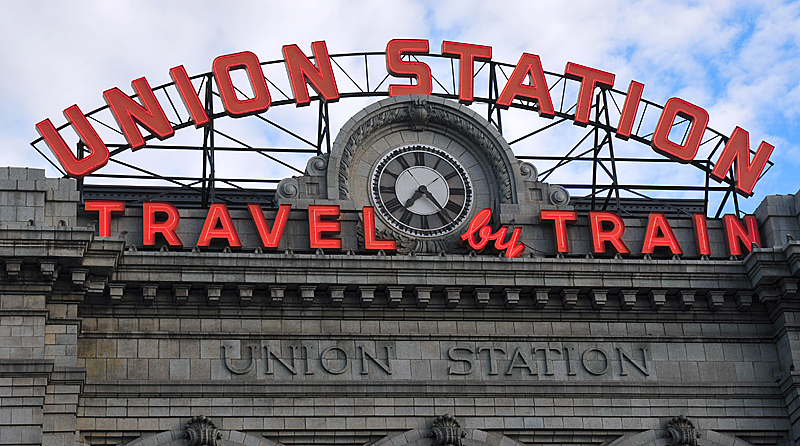






Georgetown, Colorado - For the first time in many years, the canyons west of here echo to the sounds of a genuine Colorado & Southern steam engine. C&S Number 9, a diminutive mogul built by Cooke in 1884, was primarily used in passenger service. It hauled the last passenger train from Leadville to Denver on April 10, 1937. The locomotive was saved to participate in the World's Fair of 1939 and later operated at the Chicago Railroad Fair in 1948-1949. It then went to the Black Hills Central in South Dakota where it languished until being purchased by the Colorado Historical Society in 1988. Uhrich Locomotive of Strasburg, Colorado restored the engine in time for the 2006 operating season.

Just beyond Georgetown loading area.
It now operates on the Georgetown Loop - also lovingly restored as it was under C&S ownership. Here, above Georgetown, narrow gauge tracks twist and loop along and between mountainsides in an extraordinary effort to carry trains up to Silver Plume.

Number 9 with train on the Devil's Gate Viaduct.
The problem facing construction engineers in 1880 was that while only about two miles apart, Silver Plume is 638 feet higher up in the mountains. To allow trains to run at all, the distances had to be stretched so that the grades could be limited. Union Pacific engineer John Blickensderfer (the line was then under Union Pacific control) laid out two sweeping curves and a loop over the lower track (technically two loops and a spiral). The grade was thus reduced to a barely manageable 3.5% while track miles were increased to 4.5 miles.

Backing to the other end for the trip to Georgetown.
Union Pacific lost control; the tracks became part of the Colorado & Southern narrow gauge. The loop became a huge tourist draw, for a time, with trains operating out of Denver's Union Station where three-rail tracks were once commonplace. But, with the advent of the automobile and good roads as well as the Great Depression, passenger and freight business nearly disappeared.

Not much room in the cab.
All seemed lost, some thought forever, when the tracks were removed in 1939. Even the Devil's Gate Viaduct, the high, iron structure which carried the upper track of the loop 75 feet above the lower track and spanned the canyon from one side to the other, was dismantled for scrap -- but not forever. In 1984, the tracks were back, the iron bridge was restored to operation and steam locomotives were once again pulling tourists over the line.

Looking down from the I-70 scenic overlook -- from here the train is visible for nearly the whole route.
Now for the first time an authentic locomotive is being operated over the restored Loop.

All steamed up and ready to go.

The Loop High Bridge and train in the autum.
More Information
See the Georgetown Loop Railroad's webpage: Georgetown Loop Railroad